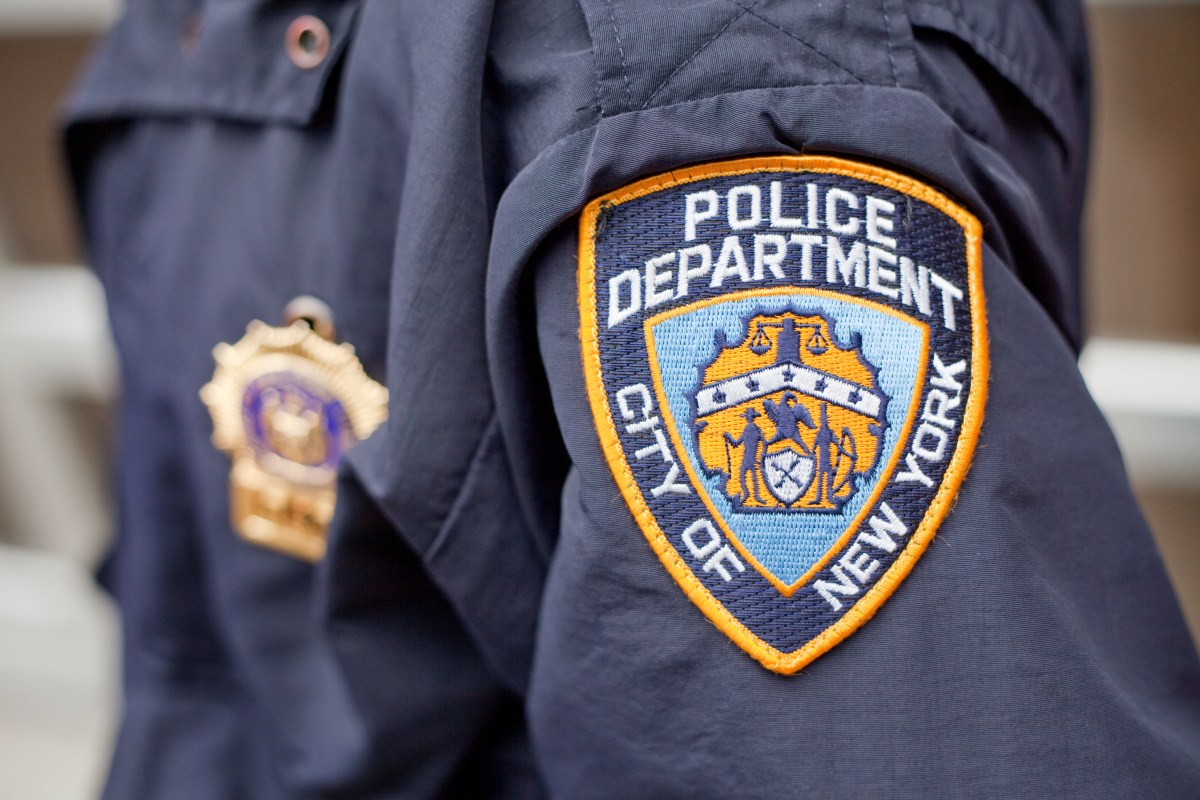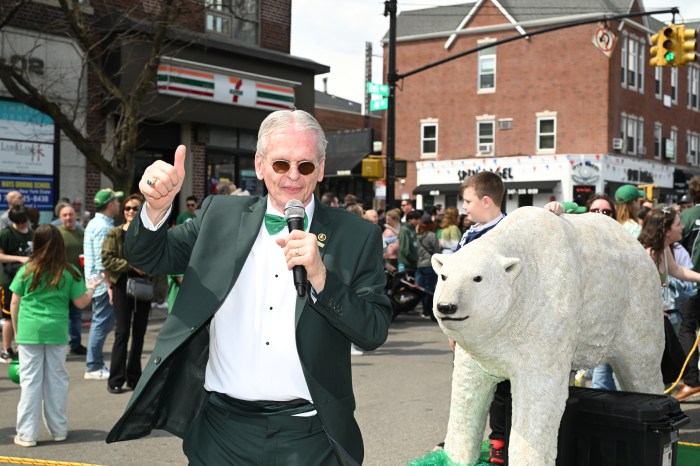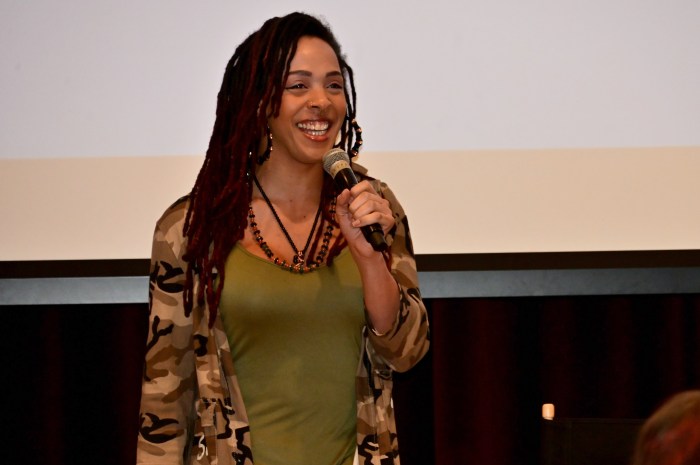By Skye H. McFarlane
Environmental advocates and local officials agree that the road to comprehensive 9/11 healthcare runs straight through Washington, D.C. Nevertheless, the city is driving forward on its own, expanding free treatment for residents, workers and students affected by the toxic dust and smoke unleashed by the World Trade Center collapse.
“We’ve come to understand that while the passage of time does heal wounds, it also reveals them,” Alan Aviles, president of the city Health and Hospitals Corp., said last week at a press conference.
Aviles and Mayor Michael Bloomberg announced last Thursday that the Bellevue Hospital W.T.C. Environmental Health Center is expanding to two satellite locations — Elmhurst Hospital in Queens and Gouverneur Healthcare Services on the Lower East Side. While environmental advocates applauded the move, they stressed that many challenges remain in making 9/11 healthcare accessible to all the affected populations.
“We’re very happy that Bloomberg has finally acknowledged that there was a health impact from 9/11 in Chinatown and the Lower East Side,” said Stan Mark, senior staff attorney for the Asian American Legal Defense and Education Fund. “We’re glad that the city has funded the Bellevue program and we’re obviously glad to get some of the resources people need on the Lower East Side.”
In addition to advocating on behalf of the city’s Asian population, AALDEF is part of the Beyond Ground Zero network, which provides support to low-income workers and residents whose lives and livelihoods were impacted by 9/11. Most of Beyond Ground Zero’s clients either returned to their dust-laden Lower Manhattan homes soon after 9/11 or worked Downtown during that time, making deliveries or cleaning the dust out of office buildings and homes.
The uninsured and immigrant workers represented by Beyond Ground Zero often did not, or could not, seek medical care due to legal, financial and language barriers. So, in 2003 the group asked lung specialist Dr. Joan Reibman if she would be willing to see 9/11 patients informally at her Bellevue Hospital asthma clinic. In 2005, with a grant from the Red Cross, the W.T.C. services became an official clinic. Last fall, the city announced that it would begin funding the program, starting with $16 million over five years.
The initial city funds allowed Bellevue to give the W.T.C. clinic more space and hire more doctors. The expansion has nearly doubled Bellevue’s patient load from around 800 last December to roughly 1,600 today. Now the city is chipping in $33 million more to fund the two satellite sites — with the hope of accommodating thousands of additional patients.
Since the new clinics are still getting up and running, it is unclear as yet what types of care and services they will offer. At least at first, some patients may need to be referred back to the original Bellevue center. And compared to the $150 million per year that the city says it needs to properly fund Bellevue and two other 9/11 health clinics, the $49 million over five years is, Mark said, “not really all that much money.”
Like at the original Bellevue clinic, patients whose symptoms show a valid link to 9/11 exposure will receive treatment (including most medications) free of charge. Because the clinic has a waiting list, the most urgent cases are treated first.
Despite the lingering questions, advocates are glad that some care will now be available in a setting that is both closer and more familiar to the Lower East Side’s immigrant populations. While Bellevue is up in the East 20s, Gouverneur Healthcare sits on Madison St., near the Manhattan Bridge, and has nurses fluent in Spanish, Mandarin and Cantonese. Mark said that Gouverneur has been treating affected residents since 9/11, but up until now has not had a specialized staff or protocols for providing such treatment.
Reibman told Downtown Express last December that expanding her W.T.C. clinic was a challenge, since there are no established experts in the odd mélange of maladies caused by W.T.C. exposure. Although respiratory problems are the most common symptom, residents have also commonly presented with chronic skin and digestive irritation. Through trial and error, Reibman and her staff have gradually developed and refined their procedures for screening patients, treating their disorders, and training new clinic staffers.
For these reasons, both Mark and Kimberly Flynn of 9/11 Environmental Action said they were glad that Reibman and Bellevue will be overseeing the new clinics.
“I like from a medical standpoint that Dr. Reibman oversees it, to make sure that the care is conducted to her standards and the protocols they have developed over the past five years,” Mark said. “It’s good that we’re not trying to recreate the wheel.”
Mark added that even with the new Lower East Side location, more community outreach is needed to let low-wage residents know that their health problems may be connected to their 9/11 exposure, and that free healthcare is available to them regardless of their insurance or immigration status.
“Getting them in for treatment is the hardest part,” Mark said.
Mark hopes that the clinic can secure federal funding, both to sustain its current services and to research treatments for rarer conditions such as reproductive problems, neurological disorders and cancers — all of which are suspected to have 9/11 links in certain cases.
The city agrees. In February, a panel of agency staffers and health experts released a report calling for $150 million per year in federal dollars to fund three “Centers of Excellence” — the Bellevue clinic and two clinics for first responders run by Mt. Sinai Hospital and the Fire Dept. The report also predicted that late-emerging illnesses like cancers would likely make funding necessary well into the future.
On Thursday, Bloomberg called for the U.S. Congress to pass the James Zadroga Act. Named for an N.Y.P.D. detective who died from exposure to 9/11 toxins, the Zadroga Act, as currently written, would provide healthcare and the possibility of victims’ compensation to everyone affected by W.T.C. toxins.
“The City is stepping up to the plate to make sure that everyone gets the health care they need — despite this clearly being a national responsibility,” Bloomberg said. “There is much about World Trade Center health effects that we still don’t know, but one thing we do know is that 9/11 was an act of war against our entire country and the federal government must take responsibility for everyone whose health was harmed and pass the James Zadroga Act.”

































